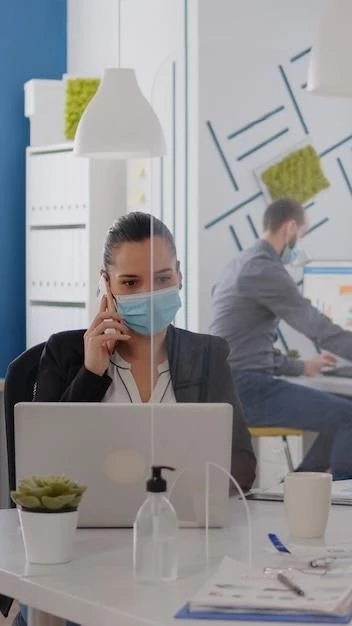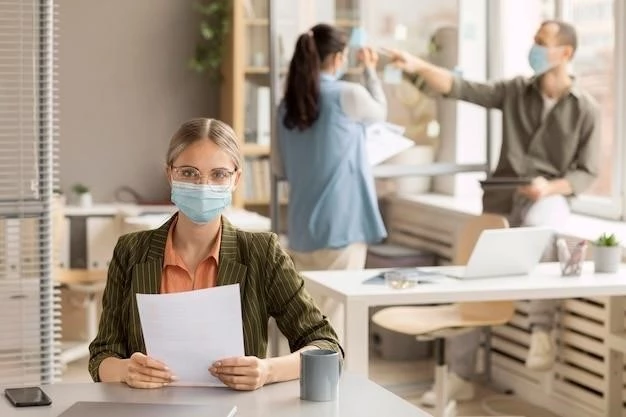As someone who has spent the last few years navigating the tumultuous waters of the COVID-19 pandemic, I can attest to the profound impact it has had on our lives, particularly in the realm of workplace safety. The invisible enemy forced us to reevaluate nearly every aspect of our work lives, from the way we interact with colleagues to the very air we breathe. While the initial wave of lockdowns and restrictions brought about a temporary decrease in workplace fatalities due to reduced economic activity, it also unveiled pre-existing vulnerabilities and created new challenges in ensuring worker safety.
The Early Days: Uncertainty and Fear
I vividly recall the early days of the pandemic. The constant barrage of news reports, the scramble to procure masks and hand sanitizer, and the eerie silence of empty office buildings created an atmosphere of uncertainty and fear. Like many others, I transitioned to remote work, a move that presented its own set of challenges, but also highlighted the inherent dangers faced by essential workers who could not afford this luxury.
Healthcare professionals, grocery store employees, delivery drivers, and countless other essential workers continued to show up day after day, putting themselves at risk to keep society functioning. The nature of their work, often involving close contact with the public, made them particularly vulnerable to infection. Tragically, many of these frontline heroes paid the ultimate price, contracting COVID-19 and succumbing to its devastating effects.
A Shift in Perspective: Prioritizing Worker Safety
The pandemic served as a stark reminder that workplace safety extends far beyond traditional concerns like slips, trips, and falls. It forced businesses to grapple with a novel threat, one that required innovative solutions and a renewed commitment to protecting their most valuable asset – their employees.
I witnessed firsthand the implementation of new safety protocols in my own workplace. Temperature checks, mandatory mask-wearing, social distancing measures, and enhanced cleaning procedures became the new normal. While these measures were initially met with some resistance and skepticism, they gradually gained acceptance as we all came to terms with the gravity of the situation.

The Long-Term Effects: A New Era of Workplace Safety?
As we emerge from the shadow of the pandemic, it remains to be seen whether the lessons learned will translate into lasting change. Will businesses continue to prioritize worker safety with the same level of urgency, even in the absence of an immediate crisis? Will the innovations born out of necessity become standard practice?
I am cautiously optimistic. The pandemic has undoubtedly shifted our collective consciousness, forcing us to acknowledge the critical importance of workplace safety. It has also accelerated the adoption of technologies and practices that have the potential to improve worker well-being in the long run, such as remote work options, flexible scheduling, and a greater emphasis on mental health resources.
My Personal Takeaways: A Call to Action
On a personal level, the pandemic has profoundly impacted my perspective on workplace safety. I am more aware than ever of the shared responsibility we all have to protect ourselves and each other. It has also reinforced my belief that every worker deserves to return home safe and sound at the end of each day.
Moving forward, I believe it is imperative that we maintain the momentum generated by the pandemic. We must continue to advocate for safe working conditions, hold employers accountable, and embrace innovative solutions that prioritize worker well-being. The legacy of COVID-19 should not be one of fear and loss٫ but rather a catalyst for positive change in the realm of workplace safety.
A Deeper Dive: Examining the Numbers
While the overall impact of COVID-19 on workplace fatalities is still being studied٫ initial data paints a concerning picture. According to the Bureau of Labor Statistics٫ the number of fatal occupational injuries in the United States increased by 10.3% from 2019 to 2020٫ reaching a 12-year high. While this increase cannot be solely attributed to the pandemic٫ it is likely that COVID-19 played a significant role٫ particularly in industries with high levels of public interaction.
Furthermore, the pandemic exposed existing disparities in workplace safety. Minority workers, who are disproportionately represented in essential industries, faced a higher risk of exposure to the virus. A study by the National Academies of Sciences, Engineering, and Medicine found that Black and Hispanic workers experienced higher rates of COVID-19 infection and death compared to their white counterparts.
The Path Forward: Building a Safer Future
Addressing the long-term impact of COVID-19 on workplace safety requires a multi-faceted approach. Governments, businesses, and workers must work collaboratively to create a culture of safety that values prevention, preparedness, and continuous improvement.
Here are some key steps we can take:
- Strengthening Regulatory Frameworks: Governments should review and update existing workplace safety regulations to account for emerging risks like pandemics. This includes providing clear guidance on hazard identification, risk assessment, and control measures.
- Investing in Research and Data Collection: More research is needed to fully understand the long-term impact of COVID-19 on worker safety and health; This includes collecting data on occupational exposures, infections, and fatalities to inform targeted interventions.
- Promoting a Culture of Safety: Businesses must prioritize worker safety and health as a core value, not just a compliance issue. This includes fostering open communication, encouraging worker participation in safety programs, and providing adequate training on hazard recognition and control.
- Addressing Disparities: It is crucial to address the systemic inequities that contribute to disparities in workplace safety. This includes ensuring that all workers have access to appropriate personal protective equipment, language-appropriate training, and health care services.
- Embracing Technology: Technology can play a significant role in enhancing workplace safety. This includes utilizing wearable sensors to monitor worker health, implementing digital platforms for hazard reporting and communication, and exploring the use of artificial intelligence to identify and mitigate risks.

Conclusion: A Shared Responsibility
The COVID-19 pandemic has been a stark reminder of the importance of workplace safety. It has highlighted both the vulnerabilities and the resilience of our workforce. As we move forward, we must honor the sacrifices made by those who lost their lives on the frontlines by working together to create a safer and healthier future for all workers. By embracing a culture of continuous improvement, prioritizing worker well-being, and leveraging the lessons learned from this crisis, we can build a more resilient and equitable workplace for generations to come.










